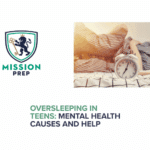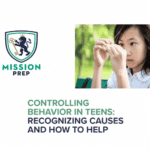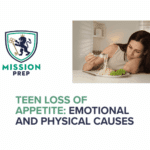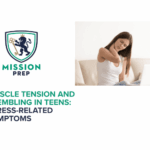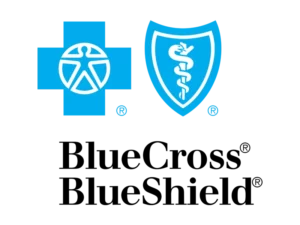Teen Impulsivity: How to Recognize and Manage Risky Behavior

Although there are many different types of impulsive behavior that a teen can exhibit, sometimes these behaviors involve an element of risk, causing parents to be concerned.
Impulsivity can emerge at any point during a child’s development. However, it’s important to note that impulsive behaviors tend to change as a child enters adolescence. Adolescent impulsivity can be closely tied to mental health disorders, so addressing these issues early is often crucial for managing teen risky behavior.
Knowing how to recognize and manage risky behavior in your child can be tricky. We all act impulsively in our lives at one point or another, so how do you know when your teen’s impulsive behavior is becoming a more serious problem?
This article explores the topic of adolescent impulsivity, covering the following areas:
- What impulsivity is
- Causes of impulsive behavior in teens
- Early signs of behavioral issues
- Mental health disorders and impulsivity
- Treatment options for adolescent impulsivity
- Parental support for managing teen risky behavior

What Is Impulsivity?
Normally, we expect impulsivity to decline as a child enters their teenage years. When this isn’t the case, it may be a sign of a more serious problem that needs to be addressed. For example, teens who continue to struggle with impulsivity are at a higher risk of participating in criminal and delinquent behavior.1
In addition to crime and delinquency, impulsivity can present itself in the form of teen self-harm. Non-suicidal self-injury (NSSI) is a growing problem among young people, and understanding its relationship to impulsivity helps determine the most effective treatment for teens.2
Teens with high impulsivity also have the potential to develop problems with things like internet and gaming addiction, disordered eating behaviors, and gambling.3 We’ll explore some of these behaviors in more detail later in this article, as they can relate to mental health disorders for some people.
Causes of Impulsive Behavior in Teens
Many factors can contribute to adolescent impulsivity. The following sections look at two major causes of impulsive behavior in teens according to recent research.
Biological Factors
Different areas of the brain are related to impulsivity. Specifically, the prefrontal cortex and frontal lobe play a major role in a teen’s self-control and tendency to act impulsively. An overstimulation of these areas of the brain has been shown to increase impulsivity3. We can’t control our biology, so it’s important to recognize that a major factor involved in teen impulsive behavior is brain chemistry.
Teen ADHD and Impulsivity
Attention-deficit hyperactivity disorder (ADHD) is a common cause of impulsive behavior in teens.4 While ADHD can be diagnosed early in life, sometimes the signs aren’t more obvious until adolescence. ADHD is thought to have genetic and environmental components. Therefore, if ADHD runs in the family, your teen may be more likely to also be diagnosed with ADHD and behave impulsively. In addition, environmental factors like choosing a risky friend group and negative parenting styles in the home could also contribute to the development of ADHD.4
There are, of course, other causes of impulsive behavior in teens, but the two broad categories identified above tend to cover the most common risk factors.
Early Signs of Behavioral Issues
Consider some of the following early signs of behavioral issues:
Aggression: If your child is consistently behaving aggressively at school or in the home, there may be an increased risk of mental health problems such as ADHD, depression, oppositional defiant disorder (ODD), and conduct disorder (CD).5- Problems with communication: When your teen socializes with their peers, deficits in communication skills may begin to emerge. For instance, they might not be able to hold a pleasant conversation or have problems with appropriate eye contact and body language.5
- Hyperactivity: Showing hyperactive behavior in response to regular sensory conditions in the environment can be a sign of a potential behavioral issue. This can include negative reactions to sounds and textures, excessively smelling and touching objects, or latching onto visual cues like lights and movement.5
As your child gets older, if they tend to already show problem behaviors, there is a chance these may get progressively worse. For example, when adolescents begin destroying property, stealing, bullying, or running away, these are more serious signs of behavioral issues that need to be addressed. Recognizing impulsive actions in teens requires ongoing awareness of early warning signs that might otherwise be overlooked.
Mental Health Disorders and Impulsivity
Getting the right diagnosis is part of ensuring your child gets adequate support for their impulsive behaviors.
Treatment Options for Adolescent Impulsivity
Depending on the mental health diagnosis, different treatment options for adolescent impulsivity may be recommended. The following are some evidence-based approaches for treating impulsivity in teens.
Medications and Behavioral Interventions for ADHD
When treating adolescents with ADHD, providers might consider a combination of medication and therapy to support impulsive teenagers. Both traditional stimulant and nonstimulant medications have proven to be effective in reducing problem behaviors in ADHD.6
Behavioral interventions in the school, and parental support, are also commonly used to help adolescents with ADHD. This involves teaching teenagers different skills to manage problem behaviors.
Therapy for ODD and CD
If your child is diagnosed with ODD or CD, the recommended treatment options differ. Because ODD and CD involve serious problem behaviors, more intensive therapy options are often necessary. Cognitive behavioral therapy (CBT) is an essential part of therapy for impulsive adolescents.5 CBT combines different types of skills for emotional regulation in adolescents, as well as building decision-making skills to consider the consequences of problem behaviors before acting on them.5
Applied Behavior Analysis (ABA)
Another type of therapy that can promote self-control in teens and children is applied behavior analysis (ABA). ABA therapy focuses on effective communication, social skills, self-control, and self-monitoring.5
There are, of course, many other treatment options for adolescent impulsivity and underlying mental health disorders. Finding out what works for your child often requires guidance, patience, and motivation.
Parental Support for Managing Teen Risky Behavior
There are also specific types of therapy that incorporate the whole family, such as functional family therapy (FFT), which we’ll go into detail about next.
Functional Family Therapy (FFT)
The FFT treatment model has three specific phases: (1) engagement and motivation, (2) behavior change, and (3) generalization.
The first phase involves therapists working to reduce negativity and blame within the family. To do so, parents are encouraged to reframe negative thoughts about problem behaviors by focusing on the child’s intention. For the most part, your teen isn’t trying to cause you harm, but the way they are behaving is inadvertently having negative outcomes. Understanding your child’s good intentions can put things into perspective.7
In the second phase, the therapist works directly with family members to create a list of problem behaviors as well as the alternative adaptive behaviors that they’d like to encourage instead. Your teen will then work on developing the specific skills identified in the treatment plan, and the therapist can monitor their progress to see if there are certain deficits that need to be addressed differently.
The final phase of FFT is about taking all the skills that your child has learned and applying them to other environments. For example, during therapy, they might be practicing behavioral skills in the home, but the generalization phase will challenge them to figure out how to use the same skills at school or in social settings. Research shows that FFT is an effective form of therapy, resulting in fewer problems and impulsive behaviors across multiple studies.7
Parental involvement in the therapeutic process is beneficial for the entire family.

Mission Prep: Mental Health Support for Teens and their Family
If you start to notice that your child is acting impulsively on a regular basis, consider reaching out to a qualified mental health professional. At Mission Prep, we’re here to help you and your child get the care they need. We treat teens with a variety of mental health problems, including oppositional defiant disorder (ODD) and conduct disorder (CD), among other behavioral disorders.
Navigating the mental health system can be hard, and we want to make it easier. Call us today to learn more about our mental health services and get individualized treatment recommendations for your child.
References
- Forrest, W., Hay, C., Widdowson, A. O., & Rocque, M. (2019). Development of impulsivity and risk‐seeking: Implications for the dimensionality and stability of self‐control. Criminology, 57(3), 512-543. https://doi.org/10.1111/1745-9125.12214
- He, X., Huang, P., Xu, X., Yu, Q., Huang, H., Yang, P., & Yang, B. (2025). Impulsivity and non-suicidal self-injury in adolescents: a systematic review and meta-analysis of longitudinal studies. Frontiers in Psychiatry, 16, https://doi.org/10.3389/fpsyt.2025.1586922
- Yun, L. J., Motevalli, S., Talib, M. A., & Garmjani, M. G. (2023). Resilience, loneliness, and impulsivity among adolescents: A systematic review of the literature. Iranian journal of educational sociology, 6(4), 1-17.
- Beauchaine, T. P., Zisner, A. R., & Sauder, C. L. (2017). Trait impulsivity and the externalizing spectrum. Annual Review of Clinical Psychology, 13(1), 343-368. https://doi.org/10.1146/annurev-clinpsy-021815-093253
- Ogundele, M. O. (2018). Behavioural and emotional disorders in childhood: A brief overview for paediatricians. World Journal of Clinical Pediatrics, 7(1), 9. https://doi.org/10.5409/wjcp.v7.i1.9
- Peterson, B. S., et al. (2024). Treatments for ADHD in children and adolescents: a systematic review. Pediatrics, 153(4). https://doi.org/10.1542/peds.2024-065787
- Hartnett, D., Carr, A., Hamilton, E., & O’Reilly, G. (2017). The effectiveness of functional family therapy for adolescent behavioral and substance misuse problems: A meta‐analysis. Family Process, 56(3), 607-619. https://doi.org/10.1111/famp.12256

